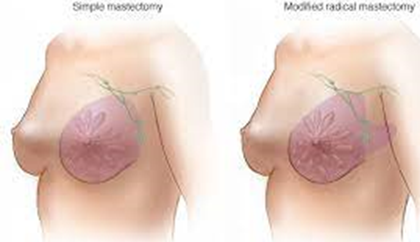A nurse is monitoring a client who has diabetes mellitus and a glucose level of 384 mg/dl. (74 to 106 mg/dL). Which of the following findings should the nurse identify as an indication of metabolic acidosis?
Positive Trousseau's sign
Dizziness upon standing
Tingling of the fingers
Increased respiratory rate
The Correct Answer is D
Choice A Reason:
Positive Trousseau's sign is incorrect. Trousseau's sign is associated more with calcium imbalances, particularly hypocalcemia, and is assessed by inflating a blood pressure cuff on the arm to induce carpal spasm. It's not a specific indicator of metabolic acidosis related to high glucose levels in diabetes mellitus.
Choice B Reason:
Dizziness upon standing is incorrect. Dizziness upon standing, also known as orthostatic hypotension, is more commonly associated with blood pressure changes upon position changes. While it can occur in various conditions, it's not a specific indicator of metabolic acidosis in this context.
Choice C Reason:
Tingling of the fingers is incorrect. Tingling sensations, known as paresthesia, can occur due to various reasons, including nerve damage related to chronic high blood sugar levels in diabetes (diabetic neuropathy). However, it's not a direct and specific indicator of metabolic acidosis caused by high glucose levels in diabetes mellitus.
Choice D Reason:
Increased respiratory rate is correct. Metabolic acidosis in a diabetic individual can trigger compensatory mechanisms, such as increased respiratory rate (Kussmaul respirations), as the body tries to eliminate excess acids through respiration to help regulate the acid-base balance. This increased respiratory rate is an attempt to blow off carbon dioxide (a potential acidic byproduct) and decrease the acidity in the blood.
Nursing Test Bank
Naxlex Comprehensive Predictor Exams
Related Questions
Correct Answer is C
Explanation
Choice A Reason:
Keeping both arms below the level of the client's heart doesn't specifically address the prevention of lymphedema and might not be necessary for this purpose.
Choice B Reason:
Limiting range-of-motion exercises with the affected arm could potentially contribute to stiffness and reduced function, but appropriate and gradual range-of-motion exercises are generally recommended to prevent lymphedema.
Choice C Reason:
Using the client's left arm to obtain blood samples is correct. Lymphedema can occur due to the disruption of lymphatic vessels during surgery, leading to the accumulation of lymph fluid. To reduce the risk of lymphedema, medical procedures or blood draws should typically avoid using the affected arm. In this case, after a right radical mastectomy, using the left arm for blood samples can help protect the compromised lymphatic system in the right arm.
Choice D Reason:
Obtaining blood pressure readings using the client's right arm is not directly related to preventing lymphedema. However, excessive pressure or trauma to the affected arm should generally be avoided to reduce the risk of lymphedema.

Correct Answer is A
Explanation
Choice A Reason:
Assisting the client to the restroom 30 minutes after meals is correct recommendation. This intervention aligns with the natural response of the gastrocolic reflex, which often leads to increased colonic motility after eating. Timing the restroom visit to this period can take advantage of the body's natural tendency to have a bowel movement after meals, potentially aiding in achieving bowel continence.
Choice B Reason:
Limiting the client's physical activity until bowel continence is achieved is not appropriate. Physical activity can actually stimulate bowel function and regularity. Moderate physical activity, as appropriate for the client's condition, can promote regular bowel movements. Restricting physical activity might hinder the overall success of bowel training.
Choice C Reason:
Limiting the client's fluid intake to 1500 mL/dayis not appropriate. Adequate hydration is crucial for bowel health and regularity. Limiting fluid intake could lead to dehydration and constipation, which can exacerbate fecal incontinence. It's important to encourage adequate hydration unless there are specific medical reasons to restrict fluids.
Choice D Reason:
Instructing the client to limit their intake of high-fiber foods is incorrect. High-fiber foods are beneficial for bowel regularity and can help manage fecal incontinence by promoting healthy bowel movements. Limiting high-fiber foods could potentially lead to constipation or exacerbate the issue of fecal incontinence.
Whether you are a student looking to ace your exams or a practicing nurse seeking to enhance your expertise , our nursing education contents will empower you with the confidence and competence to make a difference in the lives of patients and become a respected leader in the healthcare field.
Visit Naxlex, invest in your future and unlock endless possibilities with our unparalleled nursing education contents today
Report Wrong Answer on the Current Question
Do you disagree with the answer? If yes, what is your expected answer? Explain.
Kindly be descriptive with the issue you are facing.
